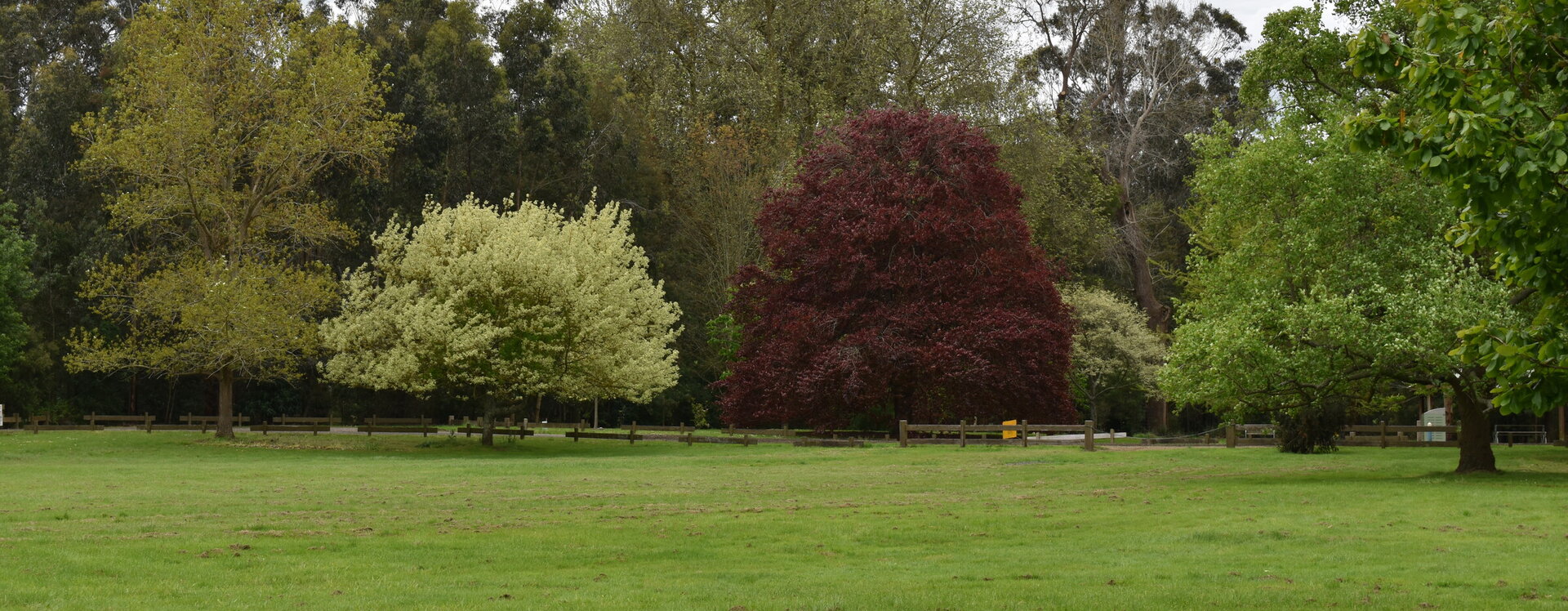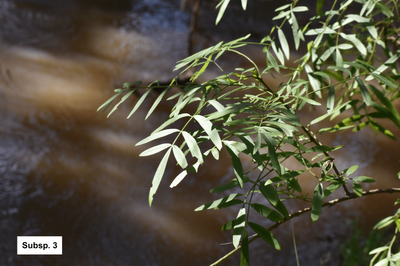
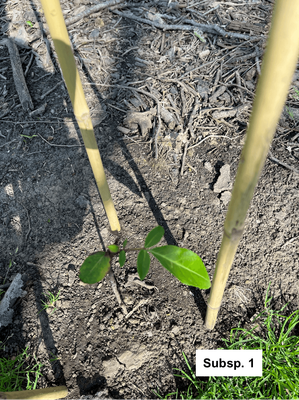
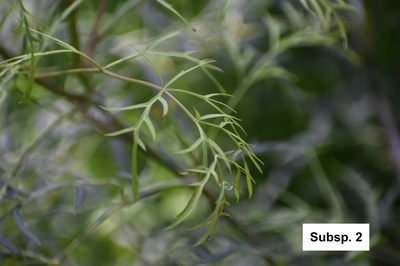
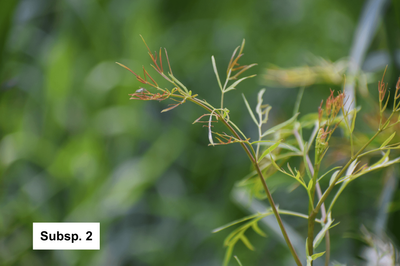

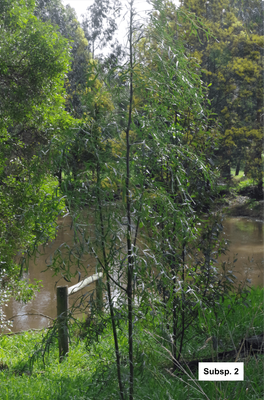

Polyscias sambucifolia
Polyscias
Polyscias sambucifolia subsp. 1, common name, Elderberry Panax. Small tree or shrub to c. 6 m high. Leaves once-pinnate, 5–30 cm long; leaflets 5–11, commonly petiolulate, occasionally subtended by a stipel, ovate or elliptic to broadly elliptic, (6–)9–20 cm long, (2–)3–11(–17) cm wide. Inflorescence commonly branched to third order. Flowers Nov.–Feb.Grows in wet sclerophyll forest and in warm- and cool-temperate rainforest, between c. 100 and 1000 m altitude, east from the Dandenong Ranges. This is the nominate subspecies.
Polyscias sambucifolia subsp. 2, common name, Ferny Panax. Diffusely branched shrub to 2 m high. Leaves 10–30 cm long; secondary rachises to 20 cm long; primary and secondary rachises may bear wings for all or part of their length, sometimes subtended by a stipel; leaflets linear, elliptic, or occasionally falcate, 15–30(–70) mm long, 5–15 mm wide, margin entire to deeply pinnatifidly lobed; stipels lacking. Inflorescence branched up to the third order (never a primary axis only). Flowers Nov.–Jan. Grows in margins of warm-temperate rainforests or in dry open-forest, often on shallow, rocky soils, usually between c. 100 and 500 m altitude. Apparent hybrids with subsp. 3 are recorded from areas of overlap, and occasionally from areas not known to contain subsp. 2 (e.g. Strzelecki Range, Wilsons Promontory).
Polyscias sambucifolia subsp. 3, common name, Elderberry Panax. Densely branched shrub, rarely exceeding 2 m high. Leaves 6–30 cm long; leaflets more than 11, sessile (or rarely
petiolulate), without stipels, oblong-linear and occasionally slightly falcate, 20–40(–70) mm long, 3–7(–20) mm wide, margin entire or rarely lobed. Inflorescence with first order branching only, or rarely with second order branching. Flowers c. Jan.–Feb. Common in dry to wet sclerophyll forests and subalpine woodlands, between c. 200 and 1500 m altitude, mostly in the east, but with westerly outliers at Mt Cole, and between Creswick and Macedon. Often locally abundant in disturbed sites. Occasionally hybridises with subsp. 2.
Distribution map is for the species, as all three subspecies are represented in the Park.
234.00 Location Many specimens form part of the Tarwin River bank restoration plantings.
Sub species 2 - Pearce's corner planted in 2012.
Sub species 1 and 3 - Many specimens form part of the Tarwin River bank restoration plantings by the West Gippsland CMA in 2009/11.
.
